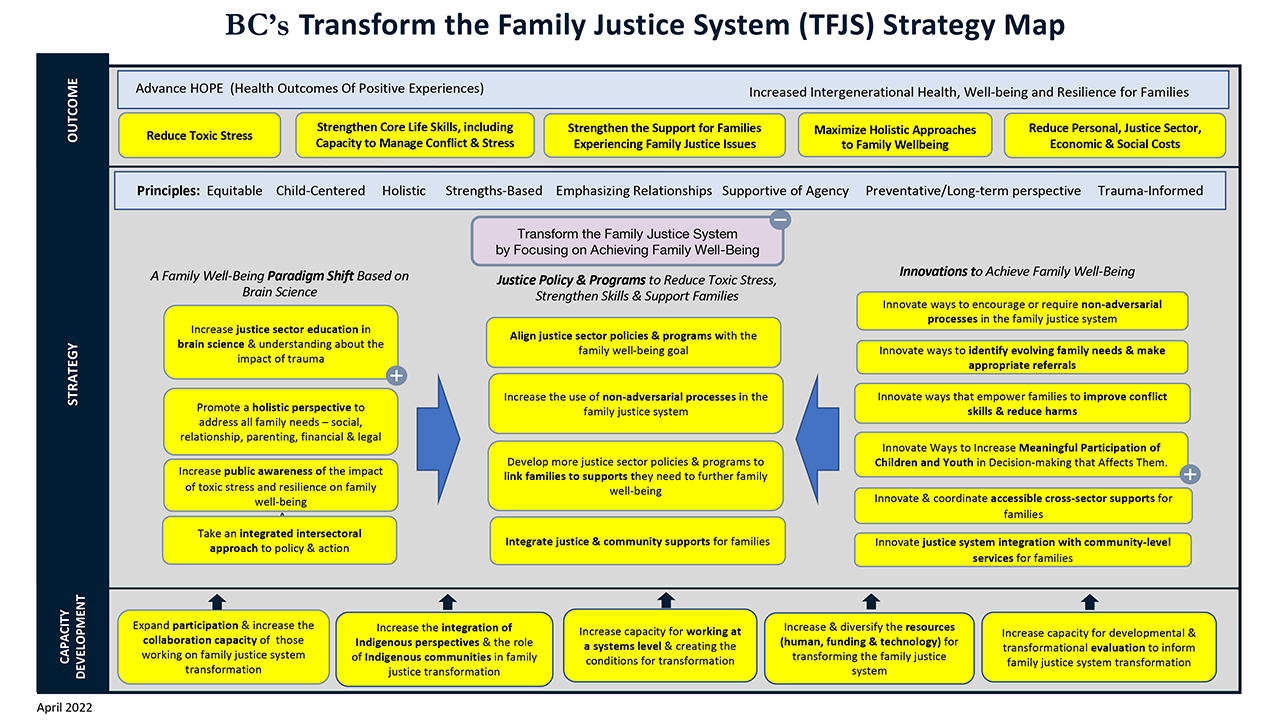The How – a Strategy to Transform the Family Justice System
The Collaborative’s strategy to transform the family justice system is set out in the Transform the Family Justice System (TFJS) Strategy Map (above). The strategy represented in the Map flows from what we know about Adverse Childhood Experiences (ACEs) and Positive Childhood Experiences (PCEs) & Resilience. It also reflects recommendations about reforming the family justice system that have appeared in reports written over many years and in many jurisdictions.
System change does not happen without innovation. Individuals and organizations involved in the work of the Collaborative will be engaged in innovative projects or actions directed at one or more of the strategy objectives on the Map. For example, the Collaborative’s Child & Youth Meaningful Participation Community of Action is working on the objective:

Meaningful Participation is one of the four rights of children and youth set out in the UN Convention of the Rights of the Child (Article 12). It is consistent with the research of resilience that emphasizes the importance of developing life skills as a way to strengthen resilience. It also resonates with the stories of many young people who report feeling disempowered when they and their families are involved in family justice issues.
The middle strategy column on the Map relates to changing Policy and Programs to align them with the three elements of the Resilience Scale (PNG): reduce toxic stress, strengthen life skills and support families. For example,

This strategic objective flows from a recognition that the traditional adversarial model of dispute resolution in the justice system escalates conflict and thus exacerbates the toxic stress being experienced by families with family justice issues.
But innovating and changing policies is not enough. Systems are by their nature resistant to change. Bringing about transformative changes requires a shift in thinking. The left column on the TFJS Strategy Map is all about paradigm shifts. For example,

Services to families are currently organized in silos – the justice sector being one of them. Yet when we take on the perspective of children, youth and adult family members, we realize that their needs are holistic. To serve them effectively, we must shift our thinking about service delivery and break down the entrenched silos.

